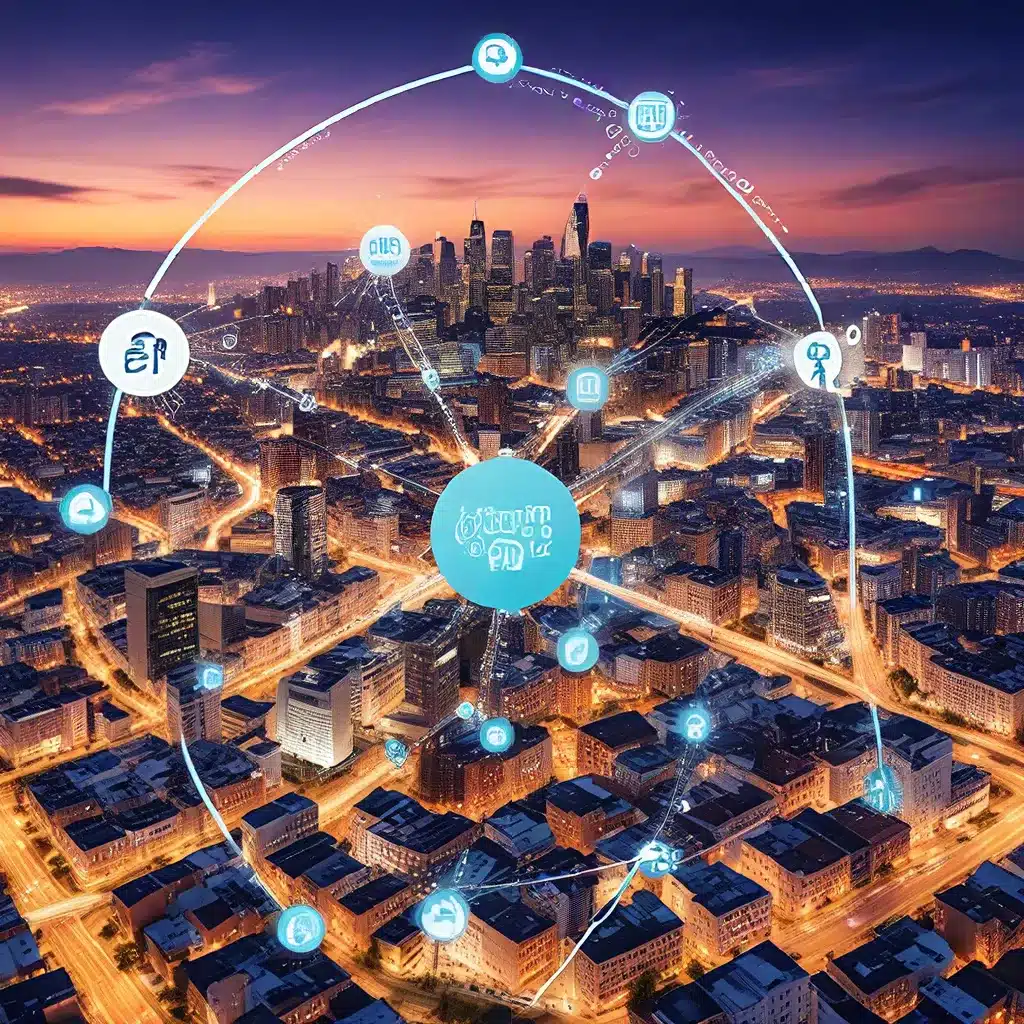
The Rise of the Internet of Things (IoT)
In today’s fast-paced world, technology has become an integral part of our lives. From smartphones and smart homes to wearable devices and virtual assistants, we are constantly surrounded by interconnected devices that collect and generate vast amounts of data. This interconnected network of devices, known as the Internet of Things (IoT), has the potential to revolutionize the way we live and work.
The concept of IoT can be traced back to the early 1980s when researchers started experimenting with the idea of connecting devices to create a network of interconnected objects. However, it was not until the late 1990s and early 2000s that IoT gained significant traction, thanks to advancements in wireless communication and sensor technologies.
At its core, IoT refers to a vast network of interconnected devices that communicate and share data with each other over the internet. These devices can range from everyday objects like refrigerators and thermostats to industrial machines and vehicles. By connecting these objects, IoT enables them to collect and exchange data, facilitating automation, remote monitoring, and intelligent decision-making.
The Power of Sensor Data Analytics
The vast amounts of data generated by IoT devices present a significant opportunity for data analytics. By leveraging sensor data analytics, organizations can unlock the true value of their IoT ecosystems, gaining valuable insights that can drive efficiency, innovation, and competitive advantage.
IoT data analytics involves the collection, processing, and analysis of data from various IoT sensors and devices. This data can provide a wealth of information about user behavior, system performance, environmental conditions, and much more. By applying advanced analytics techniques, such as machine learning and predictive modeling, organizations can uncover hidden patterns, identify trends, and make informed decisions.
One of the key benefits of sensor data analytics is its ability to enable real-time decision-making. By continuously monitoring data from IoT devices, organizations can quickly identify and respond to emerging issues, optimize resource utilization, and enhance customer experiences. This agility is particularly crucial in fast-paced industries, where timely insights can mean the difference between success and failure.
Unlocking the Value of IoT Ecosystems
To effectively leverage the power of sensor data analytics, organizations must first build a robust and secure IoT ecosystem. This involves integrating a range of interconnected devices, sensor networks, and data management platforms that can collect, process, and analyze the data generated by these systems.
One of the key challenges in building an IoT ecosystem is data integration. With a diverse range of devices and sensors, each with its own data format and communication protocols, organizations must overcome the interoperability challenges to ensure seamless data flow and analysis. Standardization efforts, such as those led by industry bodies and consortia, are helping to address these issues and promote cross-platform compatibility.
Another critical aspect of IoT ecosystem design is security and privacy. As these interconnected systems become more prevalent, they also become increasingly vulnerable to cyber threats, such as hacking, data breaches, and unauthorized access. Implementing robust security protocols, encryption techniques, and access control measures is essential to protect IoT devices and the sensitive data they collect.
Energy management is another critical consideration in IoT ecosystem design. Many IoT devices, particularly those deployed in remote or hard-to-reach locations, rely on battery power or limited energy sources. Optimizing the energy efficiency of these devices, through techniques such as low-power sensor designs and energy-harvesting technologies, can significantly extend their operational lifetime and reduce maintenance costs.
Transforming Industries with IoT and Sensor Data Analytics
The potential applications of IoT and sensor data analytics are vast and far-reaching, spanning a wide range of industries. Here are a few examples of how these technologies are transforming various sectors:
Smart Cities
In the realm of smart cities, IoT and sensor data analytics are enabling the development of intelligent transportation systems, efficient energy grids, and enhanced public safety. By integrating sensors throughout the urban environment, city planners can monitor traffic patterns, optimize energy usage, and respond quickly to emergencies, ultimately improving the overall quality of life for citizens.
Healthcare
In the healthcare industry, IoT and sensor data analytics are revolutionizing patient monitoring, disease management, and preventive care. Wearable devices and implanted sensors can continuously track vital signs, medication adherence, and activity levels, allowing healthcare providers to proactively manage patient health and identify potential issues before they escalate.
Manufacturing
In the manufacturing sector, IoT and sensor data analytics are driving predictive maintenance, process optimization, and supply chain efficiency. By embedding sensors in industrial equipment, manufacturers can monitor performance, anticipate equipment failures, and optimize production workflows, ultimately enhancing productivity and cost-effectiveness.
Retail
In the retail industry, IoT and sensor data analytics are transforming the customer experience and enabling personalized marketing. Beacons, RFID tags, and in-store sensors can track customer movement, behavior, and preferences, allowing retailers to tailor their product offerings, optimize store layouts, and deliver targeted promotions to enhance customer engagement and loyalty.
These are just a few examples of the transformative potential of IoT and sensor data analytics. As these technologies continue to evolve and become more ubiquitous, we can expect to see even more innovative applications and disruptions across diverse industries.
Conclusion
The Internet of Things and sensor data analytics have the power to fundamentally change the way we live and work. By leveraging the vast amounts of data generated by interconnected devices, organizations can unlock valuable insights, drive innovation, and enhance operational efficiency.
As we move forward, the key to unlocking the full potential of IoT and sensor data analytics will be the development of secure, interoperable, and energy-efficient IoT ecosystems. By addressing the challenges of data integration, security, and energy management, organizations can harness the transformative power of these technologies to create a more connected, responsive, and sustainable future.
To explore more about sensor networks, IoT, and related technologies, visit sensor-networks.org.